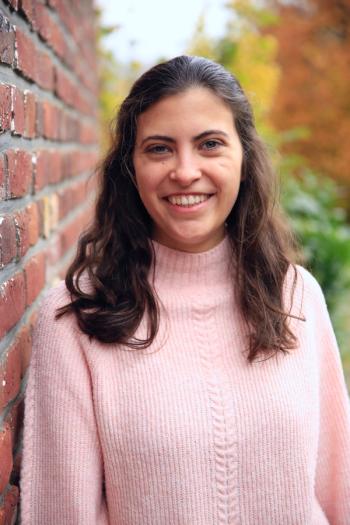Key Points
- The Coblentz Society has named Somaiyeh Dadashi and Maddie Harper as the winners of its 2025 student awards, recognizing their outstanding contributions to vibrational spectroscopy.
- A postdoctoral associate at Yale, Dadashi developed advanced nonlinear optical laser techniques to study interfacial water and bio-substrate interfaces. Her innovations include designing a novel spectro-microscope using sum-frequency generation and second harmonic generation.
- A Ph.D. candidate at the University of Vermont, Harper uses Raman spectroscopy to investigate amyloid-β fibrils in brain tissue. Her goal is to uncover molecular mechanisms behind cerebral amyloid angiopathy.
The Coblentz Society, a nonprofit organization dedicated to fostering the application and understanding of vibrational spectroscopy, announced the winners of its 2025 student awards. This year, Somaiyeh Dadashi and Maddie Harper are the two recipients. Both Dadashi and Harper will be recognized at the upcoming SciX Conference, which will take place at the Northern Kentucky Convention Center in Covington, Kentucky, from October 5–10, 2025 (1).
The Coblentz Student Awards recognize young scientists who are pursuing a career in analytical spectroscopy. The awardees receive a year’s membership in Coblentz, a certificate honoring their achievement, and a copy of the Coblentz Society’s Desk Book (1).
Dadashi is a nanomaterials researcher whose academic journey spans from Iran to the United States. She earned her M.Sc. in Nanomaterials-Nanoengineering from Tarbiat Modares University in Tehran, Iran, where she focused on laser-fabricated nanostructures for optical and therapeutic use (2). In December 2018, she joined the Borguet group at Temple University to pursue a Ph.D., which she successfully defended in December 2024.
Her doctoral research centered on nonlinear optical laser techniques to investigate interfacial and confined water at geochemical and biological interfaces (2). She led the design of a novel nonlinear optical spectro-microscope that combines surface-specific vibrational spectroscopy, both steady-state and ultrafast, using sum-frequency generation (SFG) and second harmonic generation (SHG) to analyze material and bio-substrate interfaces (2). Her projects included characterizing water properties at charged oxide surfaces, determining interfacial dielectric functions, developing the near-infrared vibrational SHG (NIR-vSHG) technique, and examining nuclear quantum effects on hydrogen bonding networks (2).
Dadashi’s work has resulted in several peer-reviewed publications, including a study in The Journal of Physical Chemistry C on electric field modulation at oxide interfaces. She was also recognized with Temple University’s Outstanding Research Assistant Award in 2024 and the Daniel Swern Fellowship in 2023 (2). Now a postdoctoral associate at Yale University, she is currently developing a wide field photothermal infrared (IR) microscope to study spatial changes in cellular biomolecules in response to environmental stressors such as temperature and pH (2).
The second awardee, Harper, is a Ph.D. candidate in Analytical Chemistry at the University of Vermont (UVM). Harper began her academic career by achieving her BA in Chemistry from Wheaton College, in Massachusetts. As an undergraduate, she researched ice-core chemistry from the Greenland ice sheet using ion exchange chromatography (2). Before graduate school, she worked at Waters Corporation as a Liquid Chromatography Technical Service Specialist, helping customers troubleshoot LC instrumentation and software.
Harper’s current doctoral research focuses on using Raman spectroscopy to study the structure and dynamics of amyloid-β (Aβ) fibrils, particularly within brain tissue. By analyzing these fibrils in their native environment, Harper’s goal is to better understand the molecular mechanisms of cerebral amyloid angiopathy and reveal how fibril structures influence disease development (2).
Harper is also involved in several community engagement organizations. She currently serves as president of UVM’s oSTEM (Out in Science, Technology, Engineering, and Mathematics) chapter, which supports LGBTQIA+ students in STEM (2). She also led the Women in STEM Network group at UVM, which is an organization that promotes empowerment and inclusion for women across the campus STEM community (2).
The SciX Conference, organized annually by the Federation of Analytical Chemistry and Spectroscopy Societies (FACSS), is an annual scientific meeting that highlights the latest research in analytical chemistry and spectroscopy. From its inception in 1974, the conference draws researchers, students, and industry professionals from around the world, allowing them to present new technologies and share scientific advancements (3). The conference features technical sessions, short courses, poster presentations, and an expansive exhibition (3). With its strong emphasis on innovation and education, SciX serves as a vital hub for scientific exchange and professional development in the analytical sciences.
To read our current and previous coverage of the SciX Conference, click here.
References
- FACSS, SciX 2025. SciX Conference. Available at: https://scixconference.org/ (accessed 2025-07-21).
- Coblentz Society, Coblentz Student Awards. Coblentz.org. Available at: https://www.coblentz.org/awards/coblentz-student-awards/ (accessed 2025-07-21).
- FACSS, About SciX. SciX Conference. Available at: https://scixconference.org/about-scix (accessed 2025-07-21).






